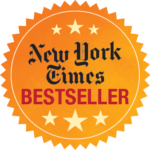On Being a Good Reader
I had a drink last night with a friend who had just returned from a writers’ conference. She is a serious writer, but had never been to a conference before, never pursued an M.F.A., had barely even attended a workshop, and I was very interested in her response to the whole thing. What had she gotten out of it? Had it helped? Hurt? Disappointed? Inspired?
“You know,” she said, “I always thought I was a pretty good reader. I could read a manuscript of a story and see when something wasn’t working, or seemed off. But I never really understood WHY something worked or didn’t.” Well, this seems key to me. In fact, this seems like perhaps the single most essential ingredient in making a workshop–or a teacher–good. Years ago, when I was first offered a job teaching a literature course to MFA students, I balked. “But I don’t have a doctorate,” I said to the head of the department. “That’s not the point,” he responded. “I want you to teach them to read as writers.”
To read as a writer is to take the first step in becoming a writer. To read as a writer means not to simply think: I’m liking this, or this isn’t any good, or I don’t like it, or it doesn’t ring true. To read as a writer means to stop and ask the question WHY. Why is this working? Or why isn’t it? How? How was this done? We often have a natural resistance to pulling apart something we love, to deconstructing a great story to examine its elements. We’re afraid that something of the mystery or the magic will vanish–and yet, this pulling apart, this understanding of what makes a story tick (or not) is the beginning of craft. Like medical students performing autopsies, we cut stories open. We look at their guts, their organs, the architecture and arrangement of their bone structure. In so doing, we learn something about our own craft, our own work.
Certainly there have been times I’ve wondered why I continue to teach. If writing can’t be taught–and I am convinced it can’t–then what exactly are we doing around those tables in those rooms, the delicate, marked-up pages of manuscripts in our hands? We are learning to read them with greater understanding and concision. And hopefully, that understanding and concision becomes a lens through which we can more clearly see our work.


















